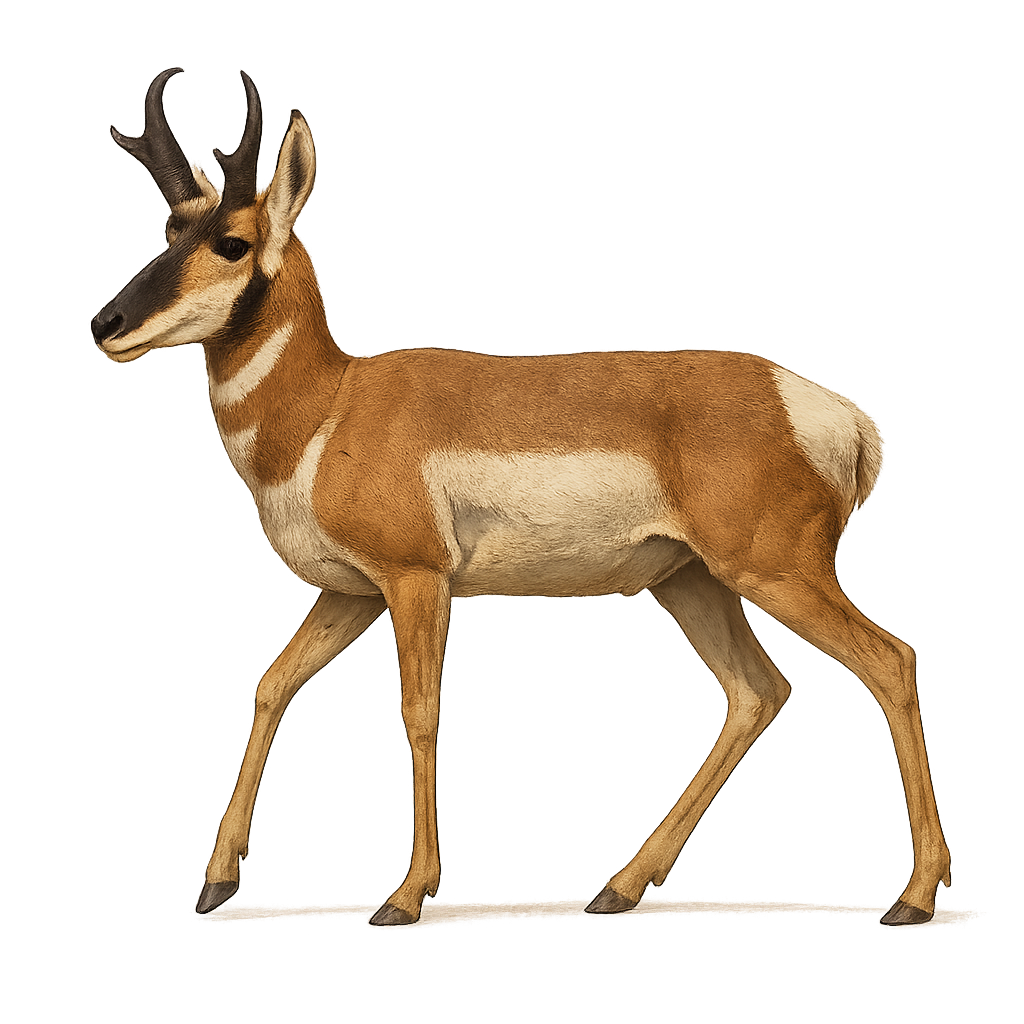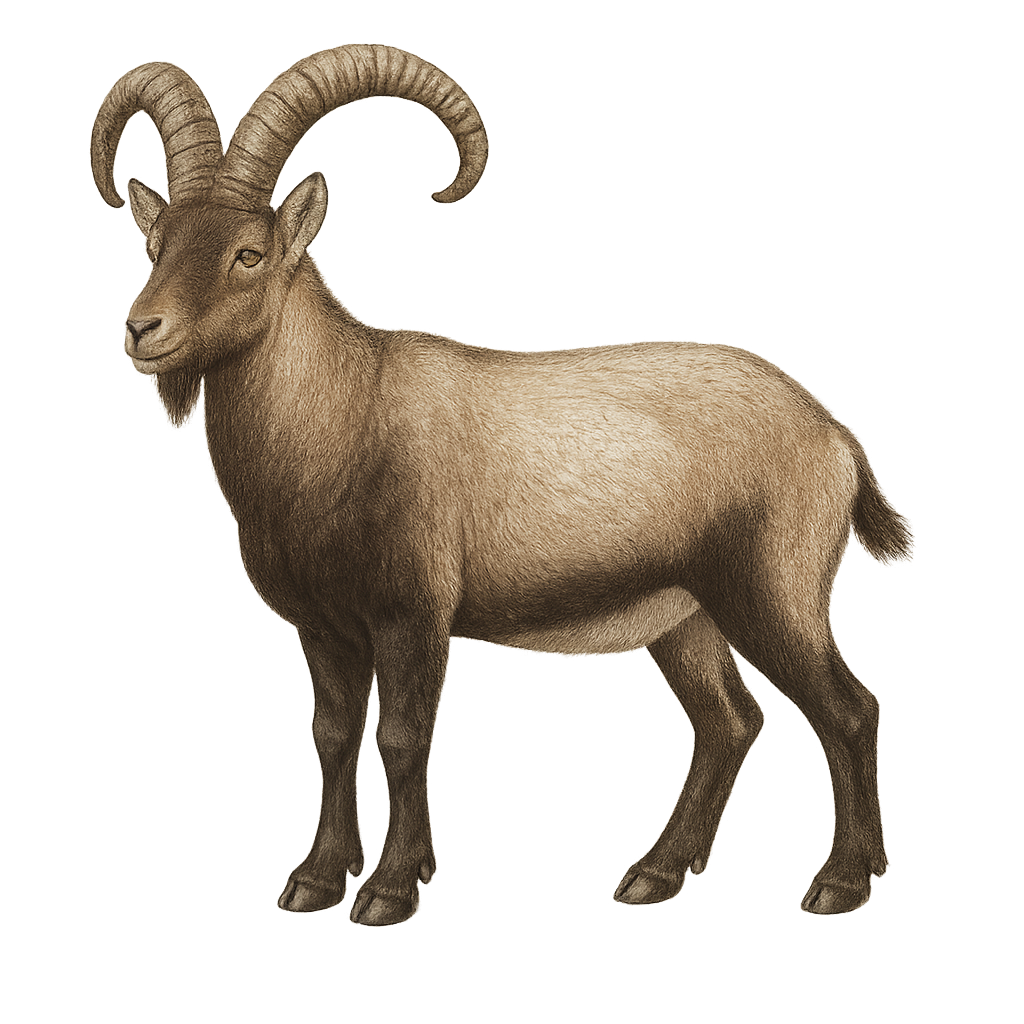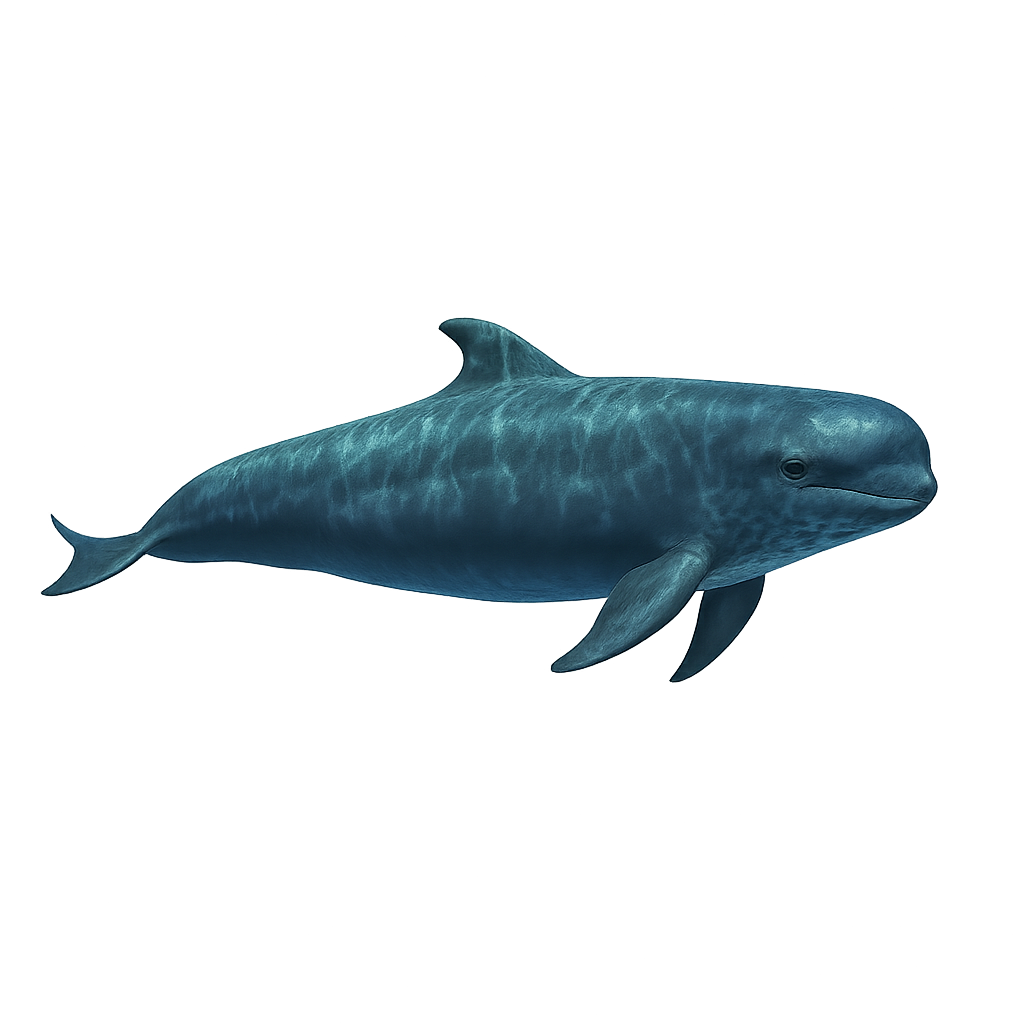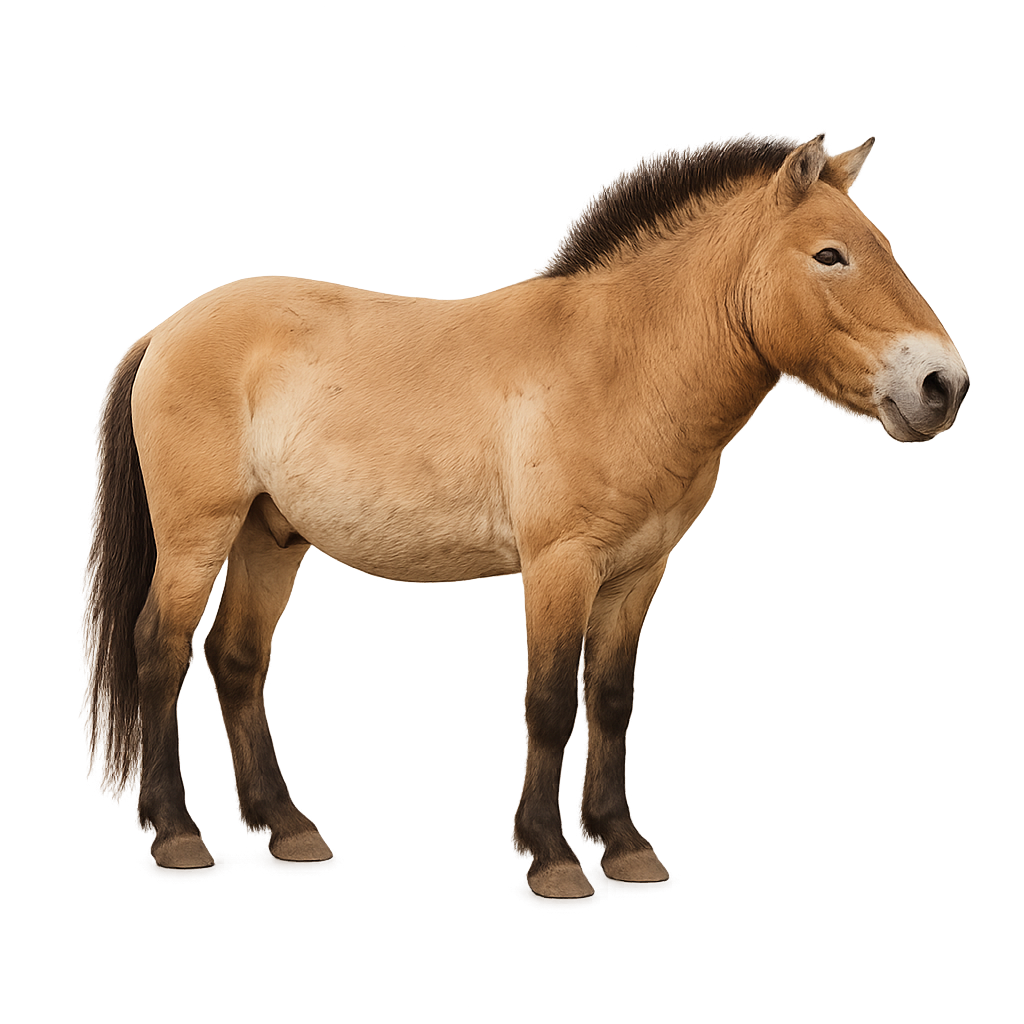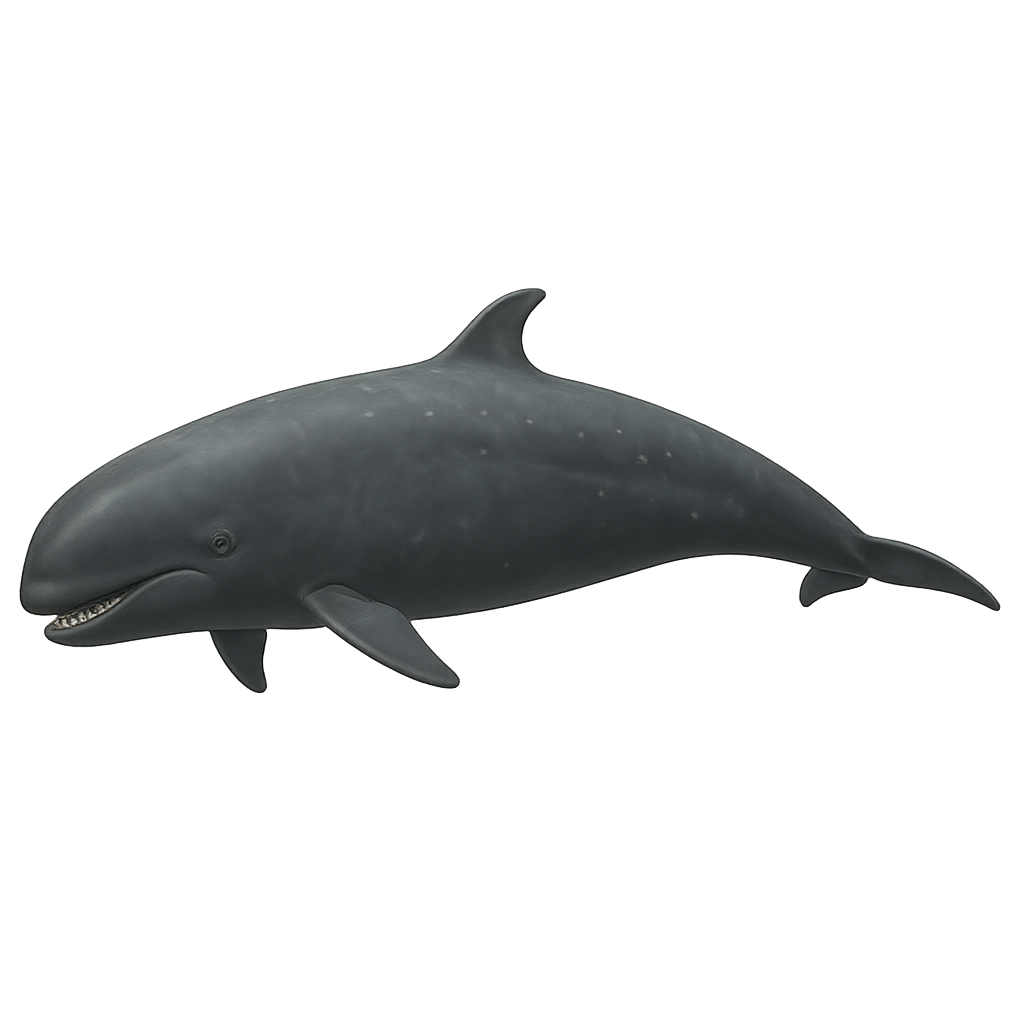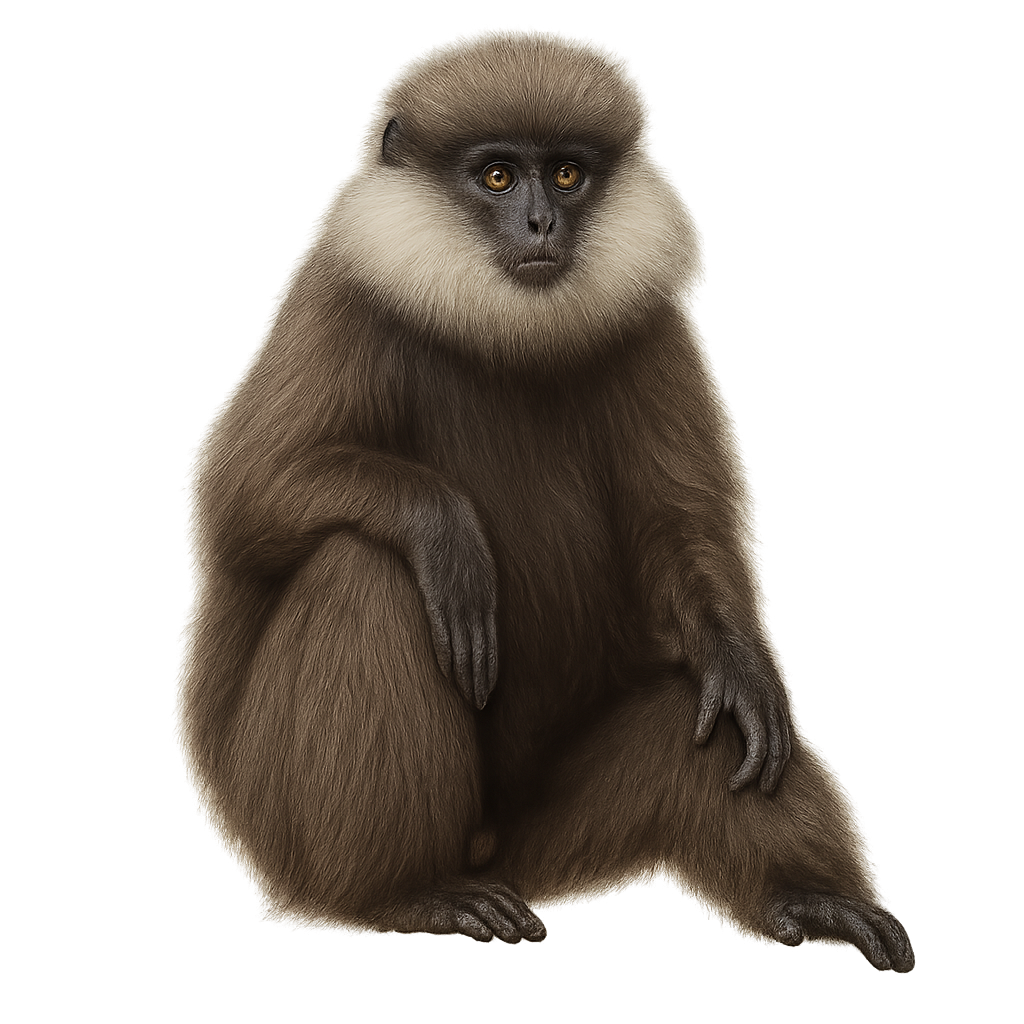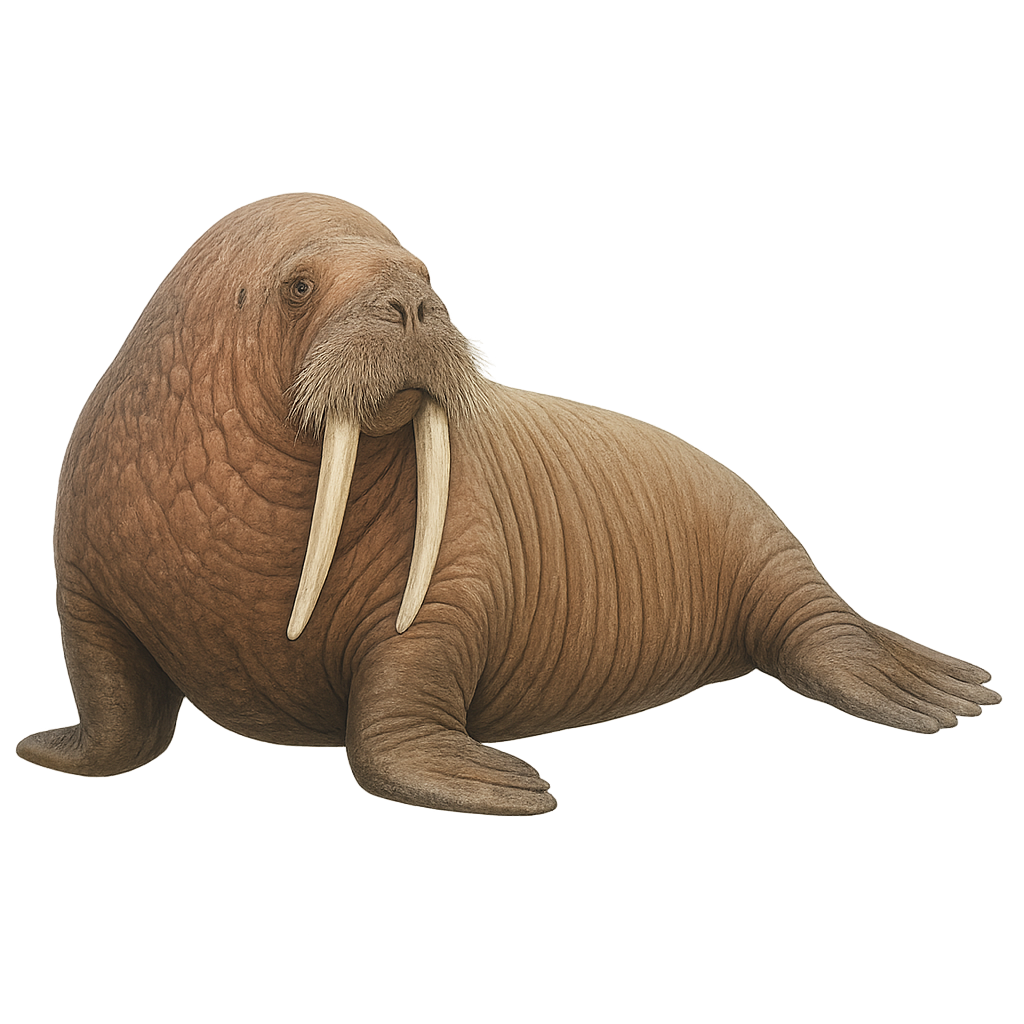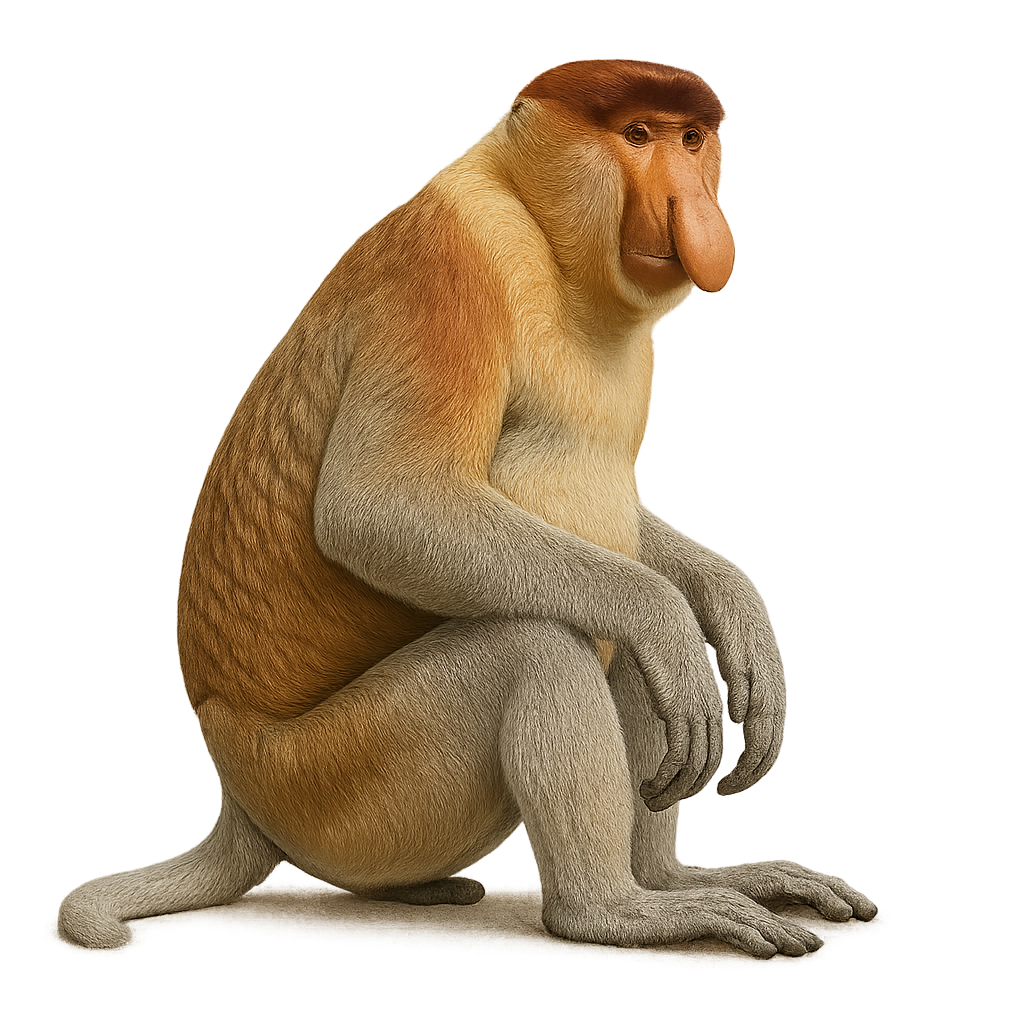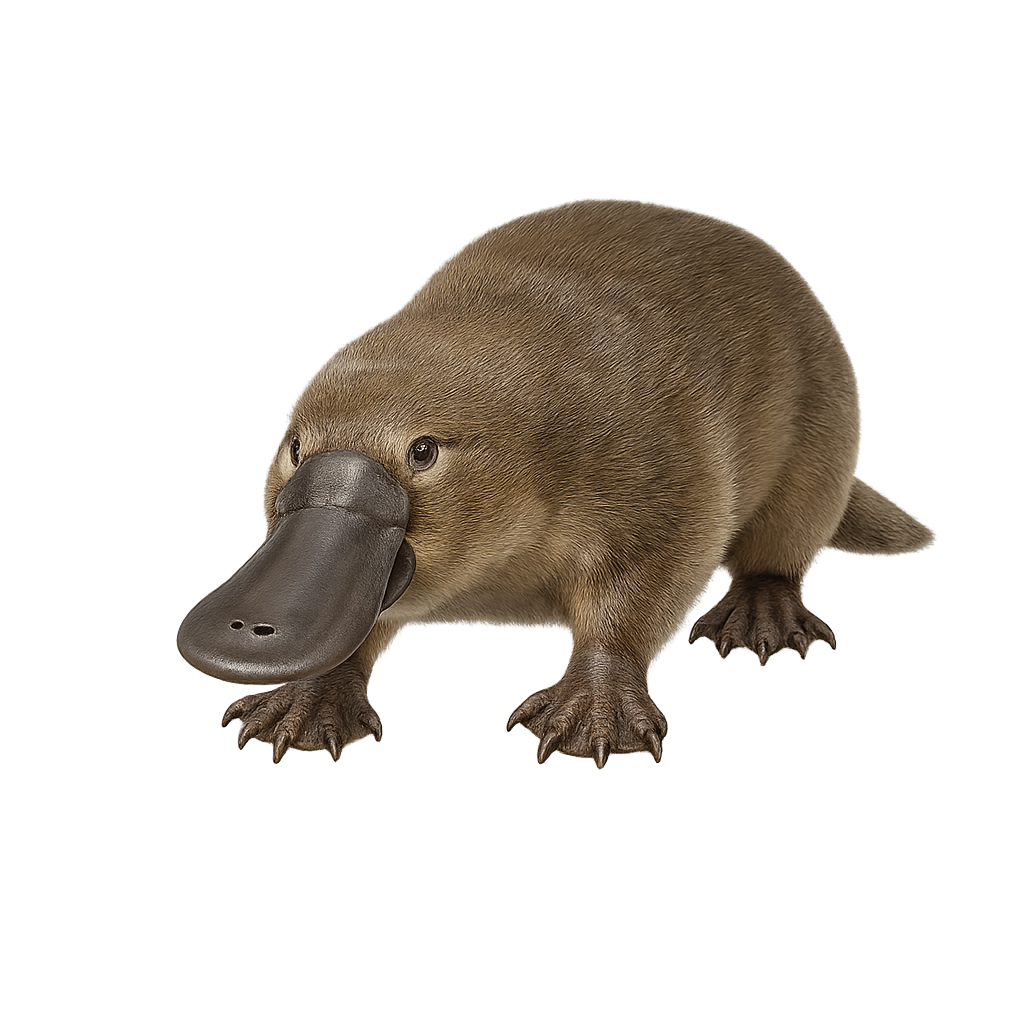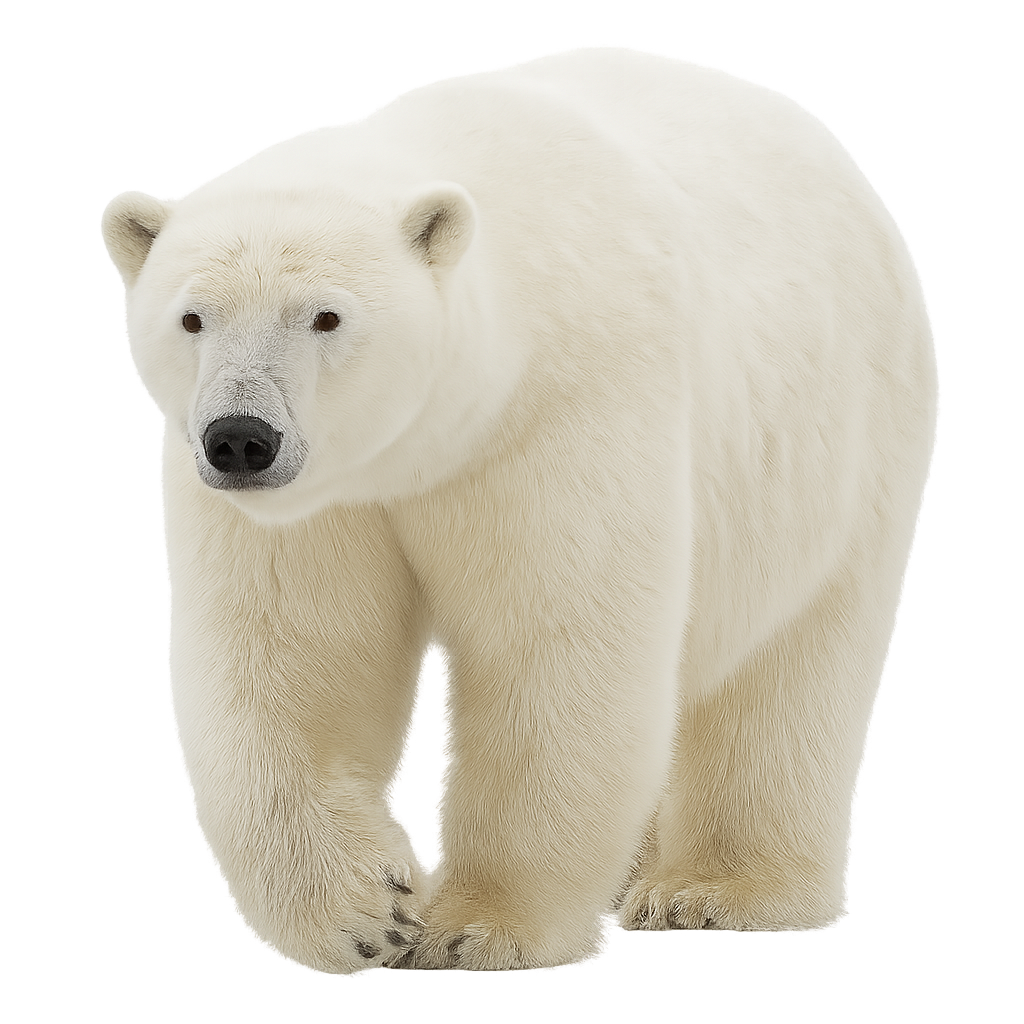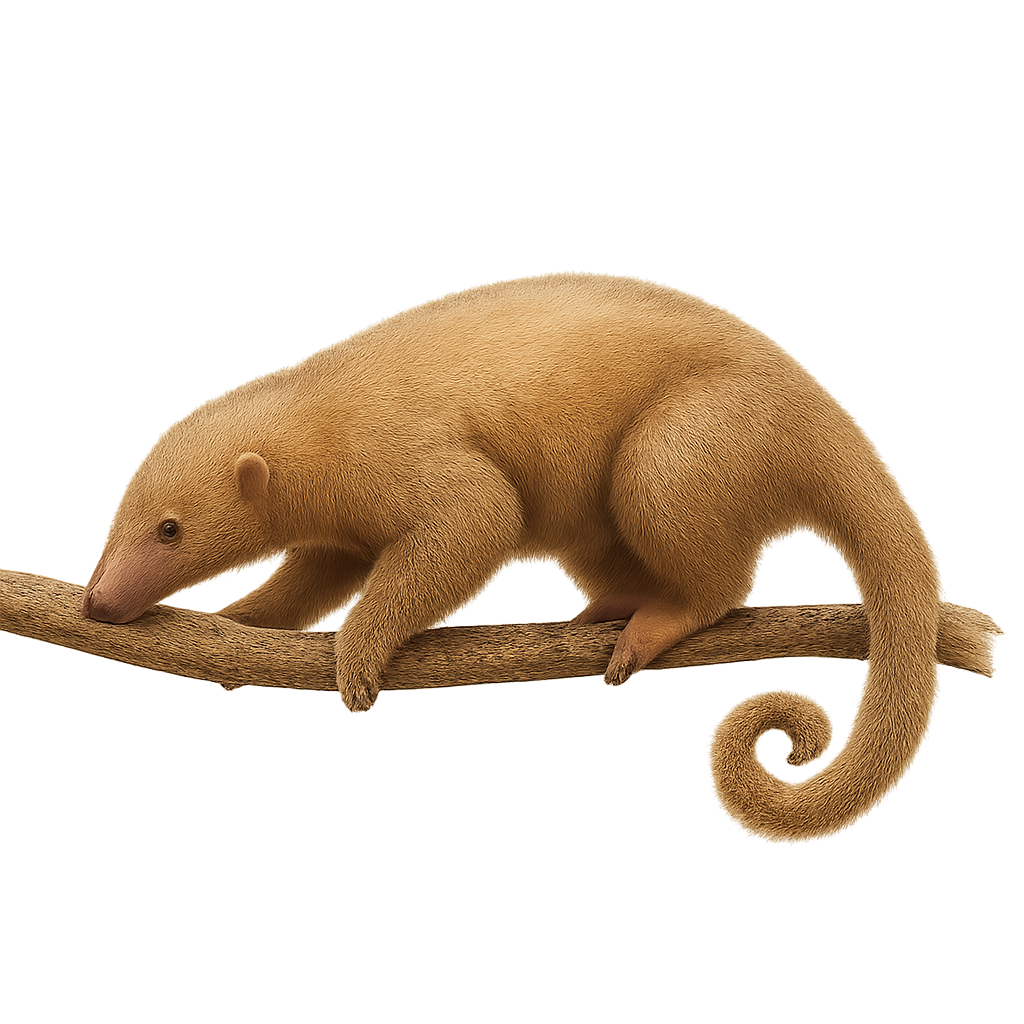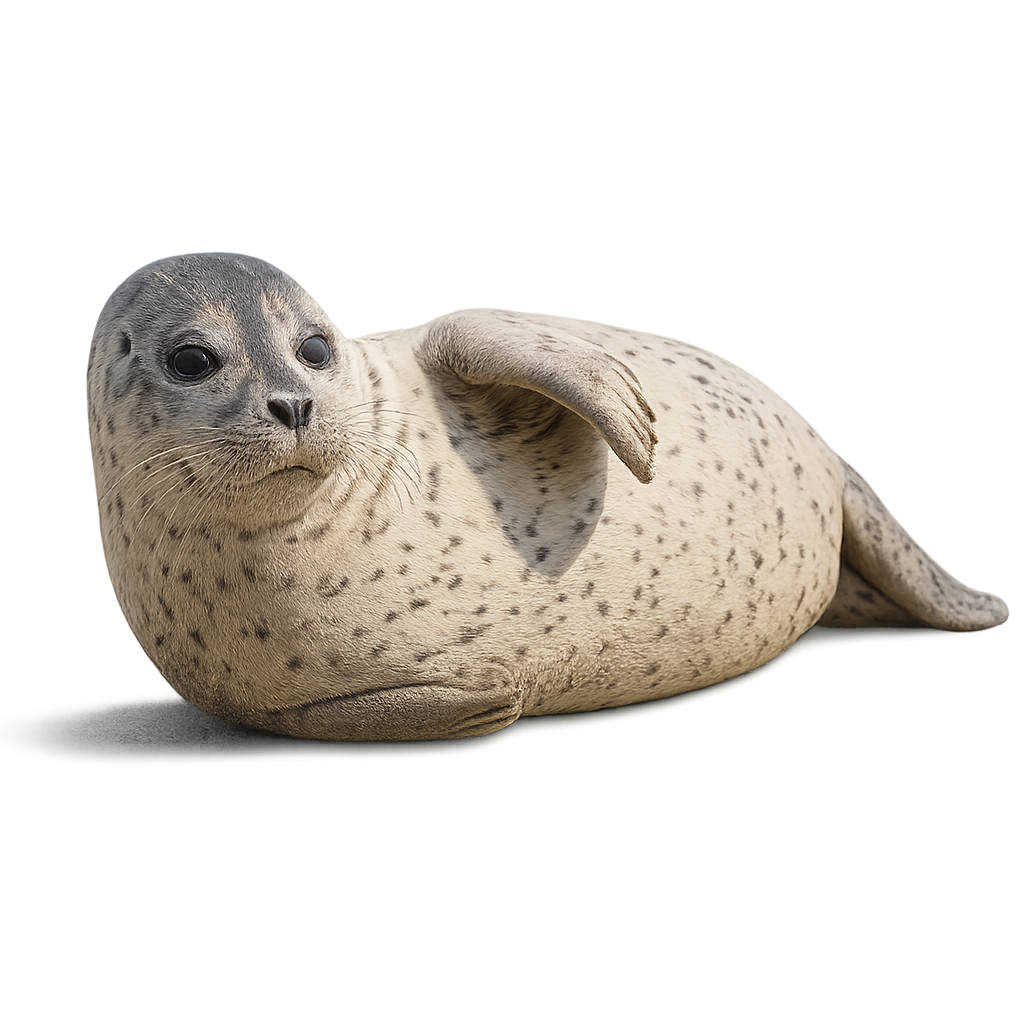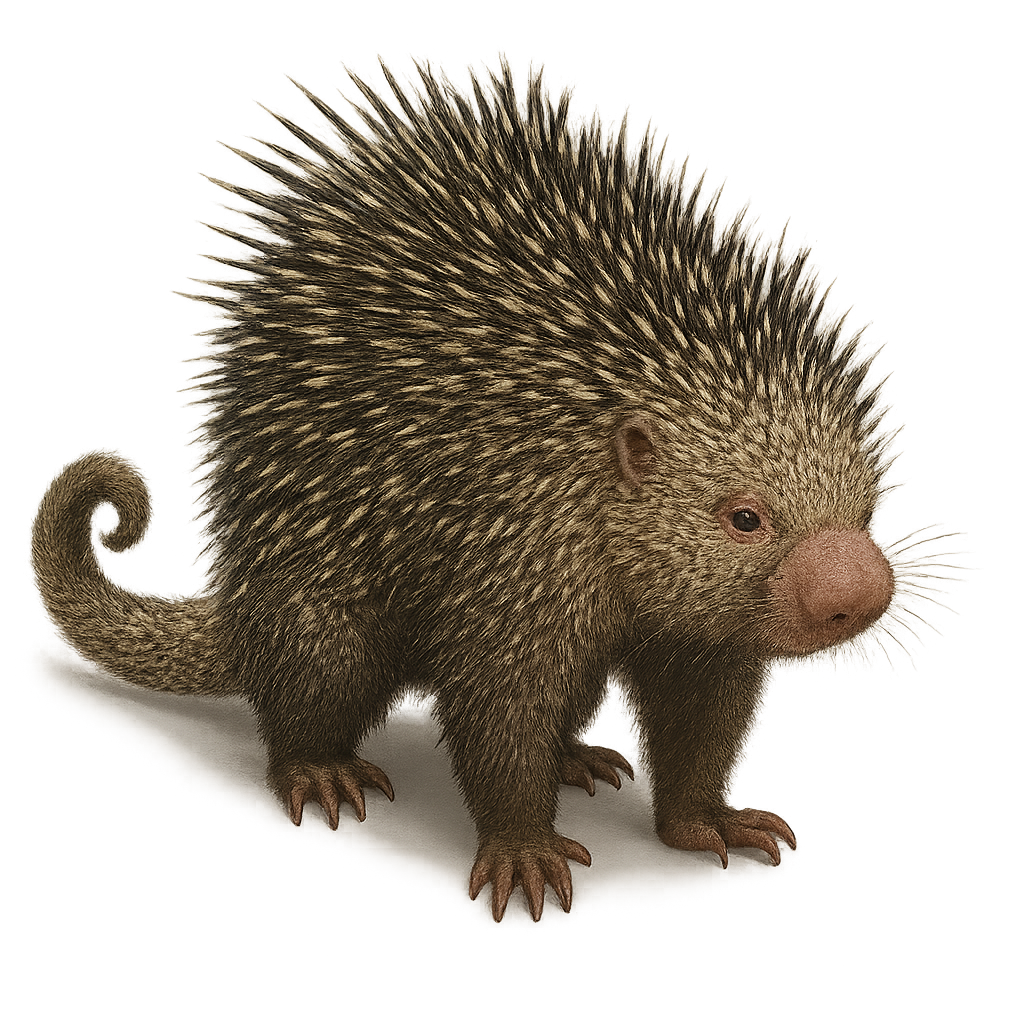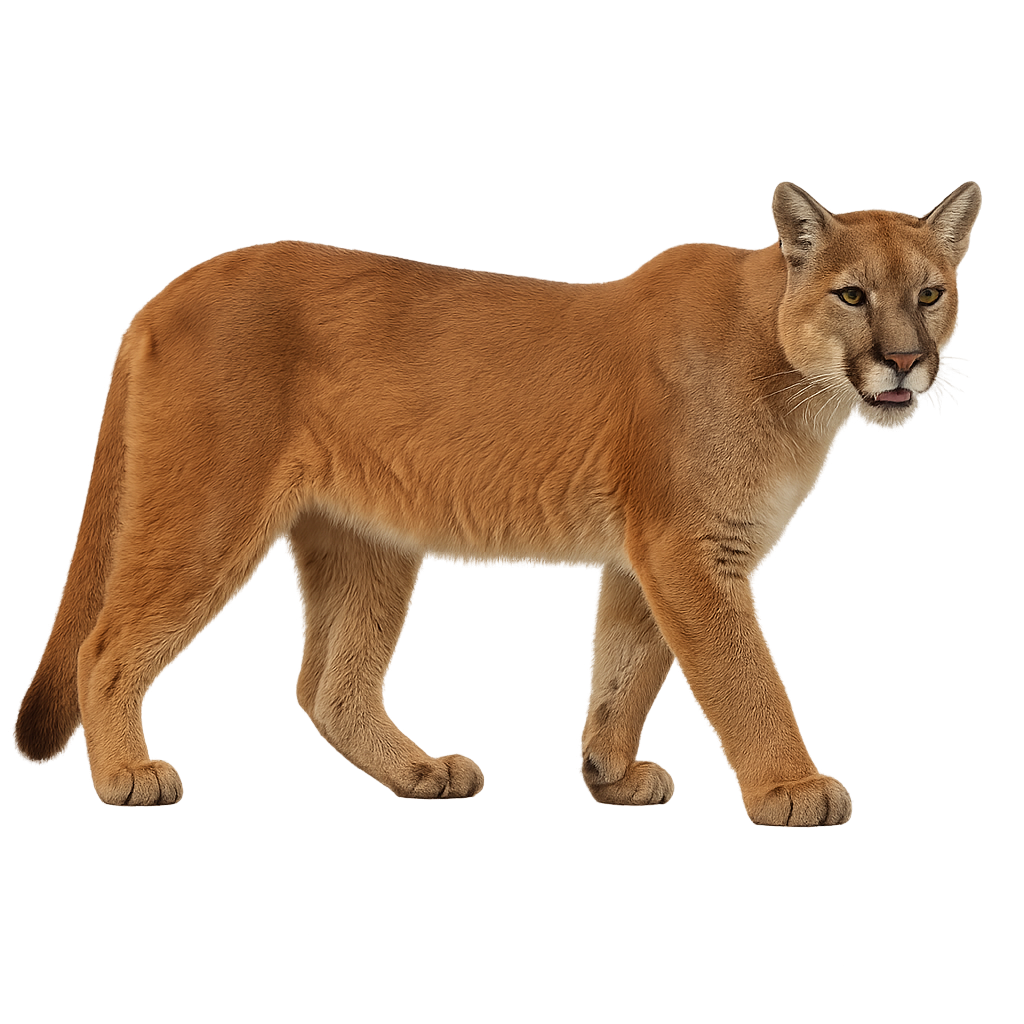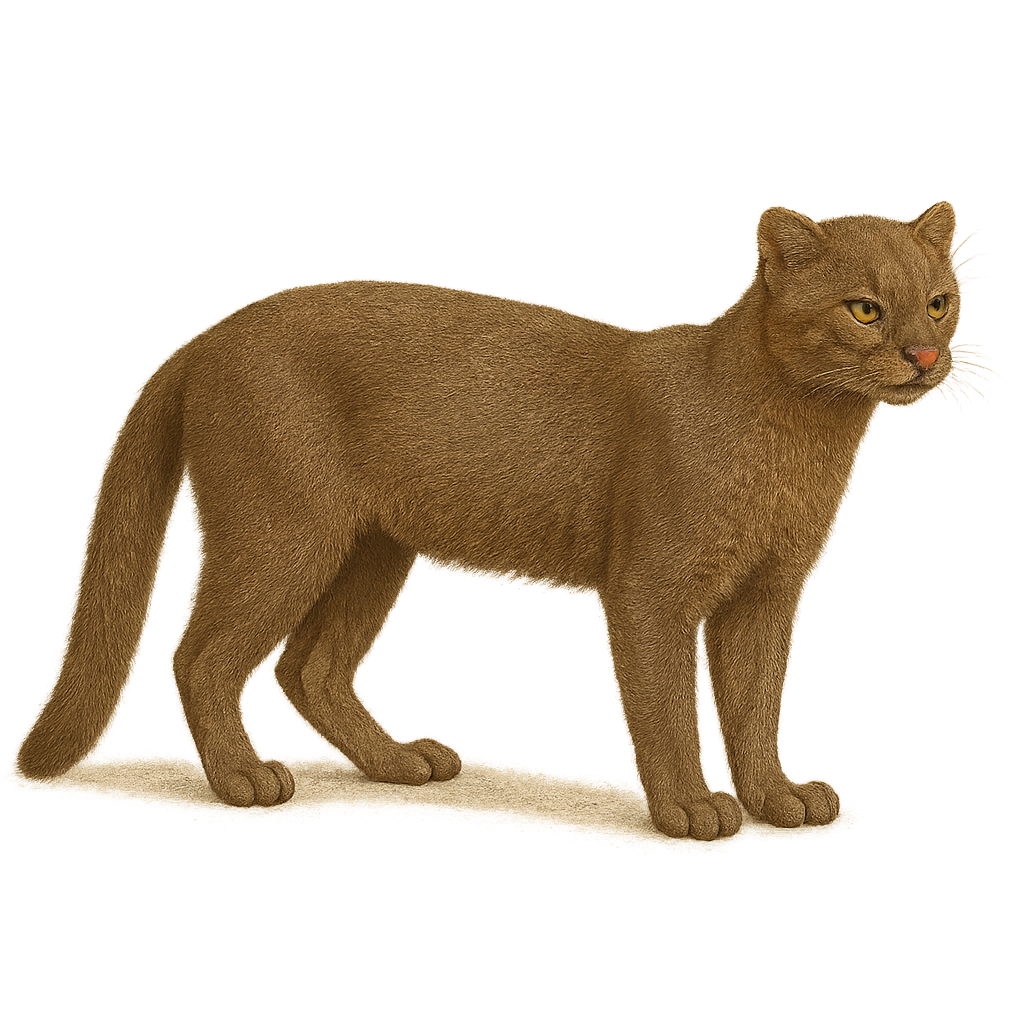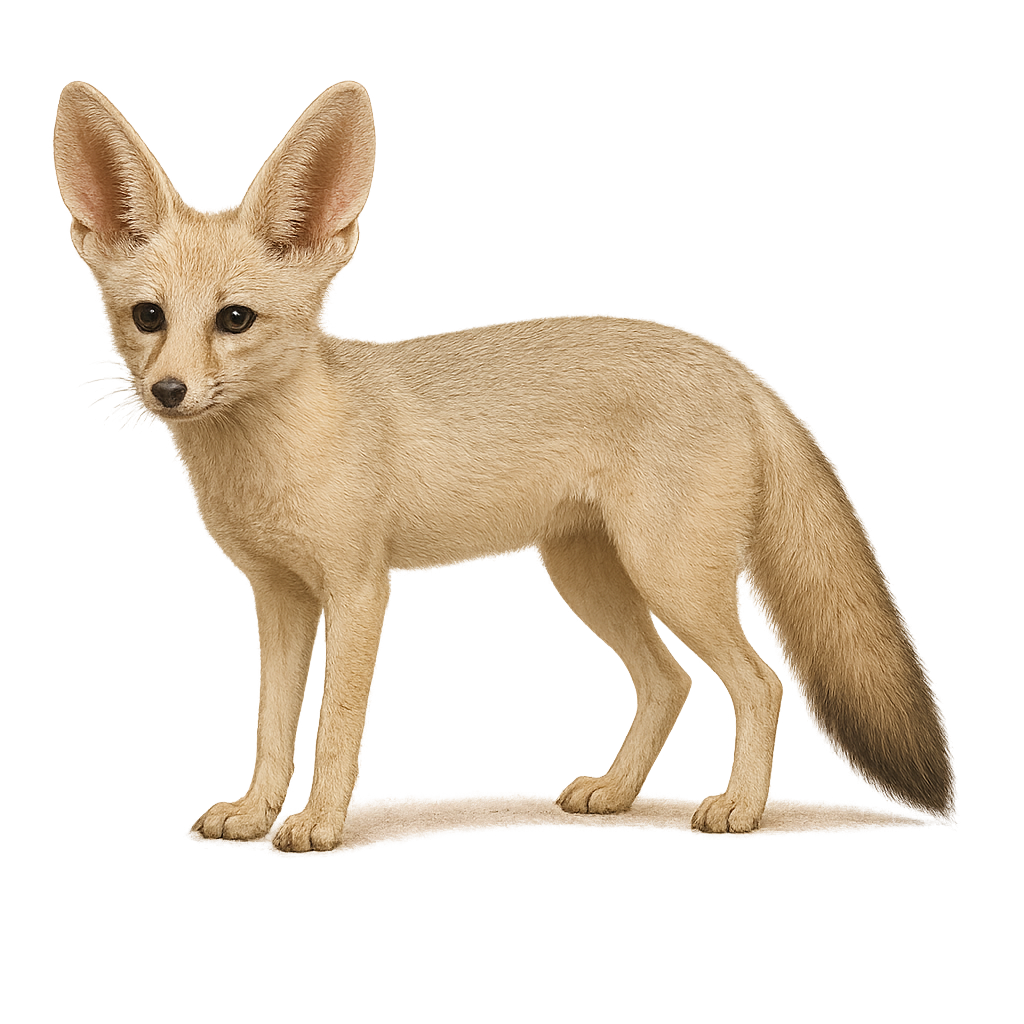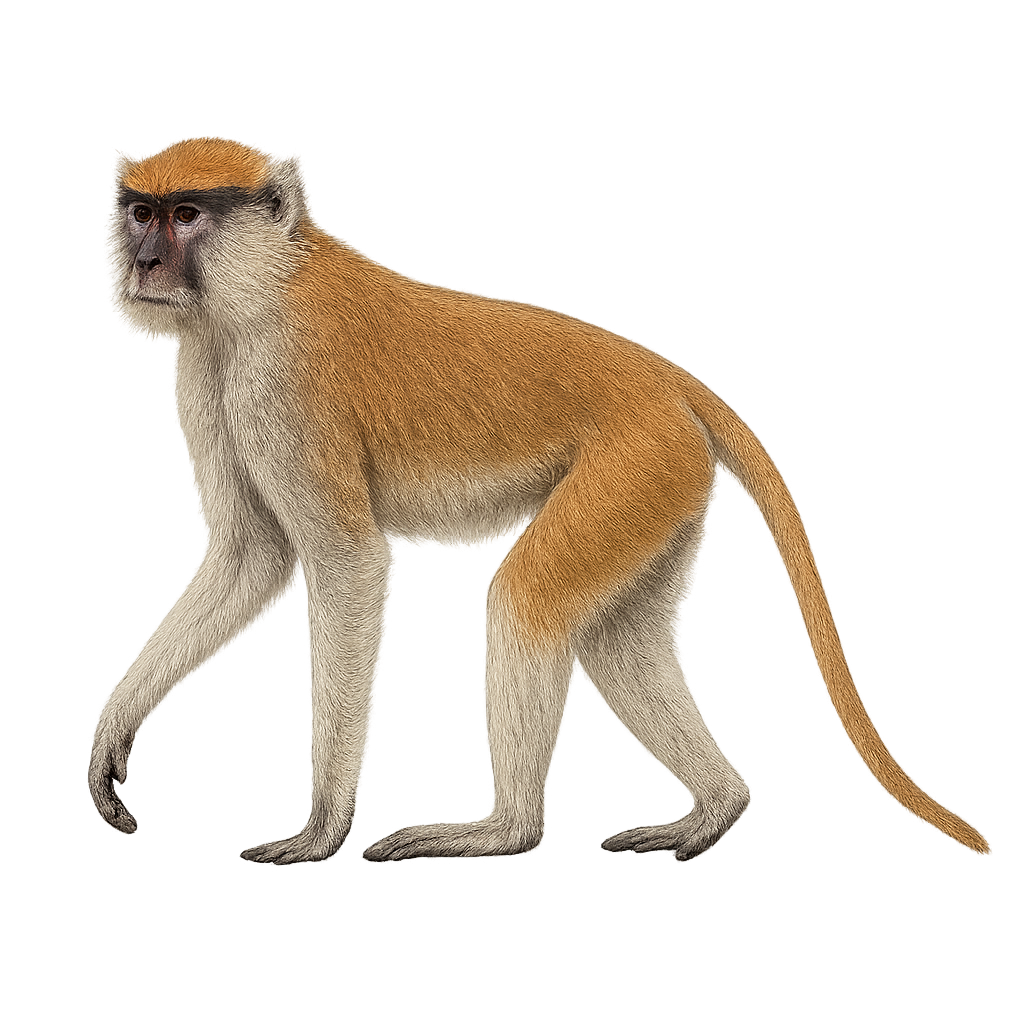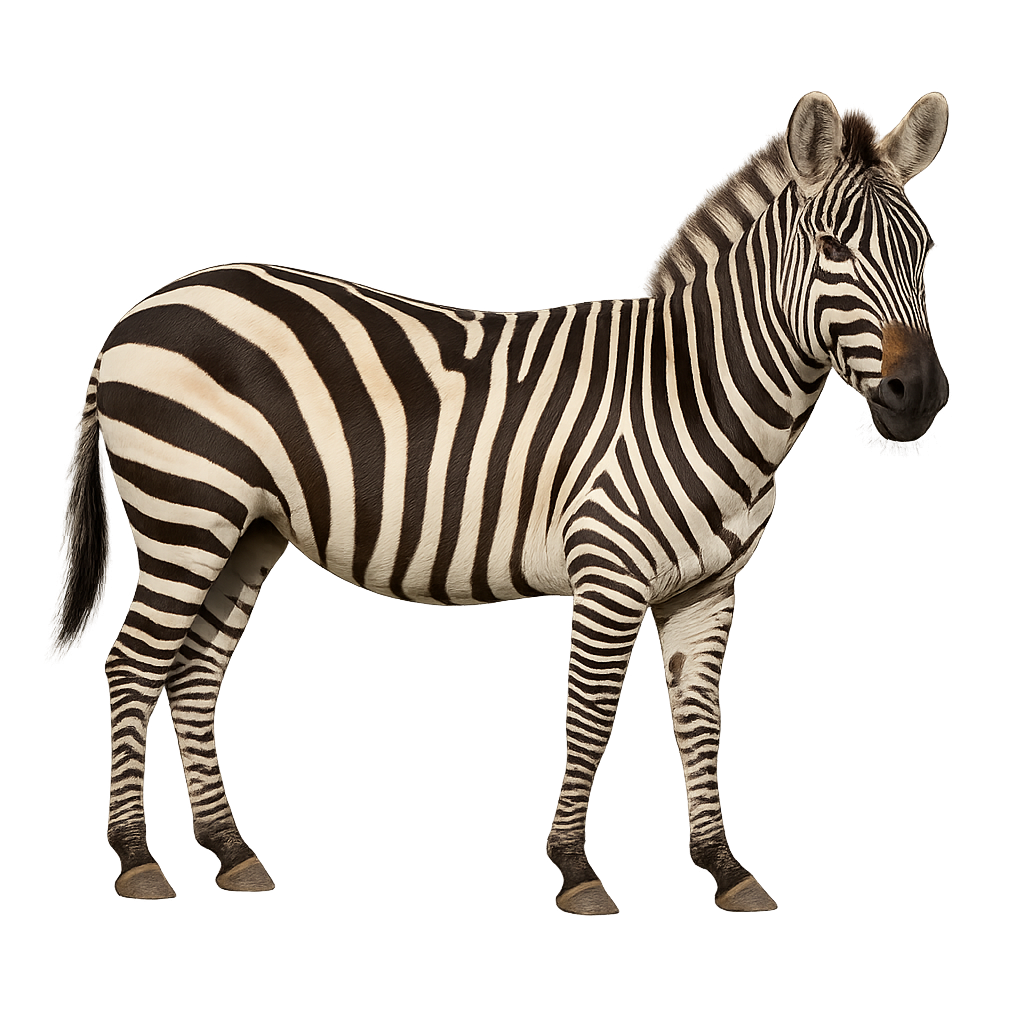The pronghorn is an ungulate 1.2–1.5 m long and 35–65 kg, with light brown and white striped fur and curved horns. It inhabits grasslands and arid steppes of North America, feeding on herbaceous plants and leaves. During the rut, males loaf near females and perform high-speed intimidation runs.
The Pyrenean Ibex, or Capra pyrenaica pyrenaica, was a subspecies of the Iberian ibex once found in the Pyrenees mountains. This robust caprine was adapted to rugged terrains and harsh climates. It had impressive, curved horns, characteristic of males, while females had smaller horns. Its coat varied from brown to gray, providing effective camouflage in its rocky habitat. Unfortunately, this subspecies became extinct in 2000, due to excessive hunting and habitat degradation. Cloning efforts were made to bring it back to life, but without lasting success. Its extinction highlights the importance of species conservation and the protection of natural habitats.
The pygmy sperm whale is a small robust cetacean measuring 2.7–3.4 m in length with a bluish-gray fusiform body. Found in warm temperate and tropical oceans, it deep-dives for squid and fish. Secretive at the surface, it is often spotted by its blow and fluke when it dives.
The Pallas's Cat, or Otocolobus manul, is a small wild cat primarily found in the steppes and mountains of Central Asia. It measures about 50 cm in length, with a tail of about 20 to 30 cm, and weighs between 2 and 5 kg. It has a thick, dense coat that is light gray to beige, with dark stripes on the back and lighter spots on the belly, allowing it to blend perfectly into its environment. The cat is also known for its large, rounded ears and piercing eyes. The Pallas's Cat is a solitary, primarily nocturnal hunter that feeds on small mammals, birds, and insects. While it is an excellent predator, it is often difficult to spot due to its elusive nature and lifestyle in harsh terrain. The species is threatened by habitat loss, hunting, and competition with humans for natural resources. Conservation efforts are underway to protect the Pallas's Cat and its habitats.
Przewalski's horse is a rare and hardy species of wild horse native to the steppes of Central Asia. It is the last true wild horse species still in existence, descended from ancestors that survived the Ice Age. This horse is characterized by its small size, tawny coat, and erect mane. Although it disappeared from the wild, it has been successfully reintroduced to its native habitats. Threatened by habitat loss and hunting, it is currently considered a vulnerable species.
The False killer whale is a large cetacean belonging to the dolphin family, known for its resemblance to the orca. However, unlike the orca, the false killer whale generally lives in warmer waters and is more discreet. It primarily feeds on fish, squid, and small marine mammals. Although its social behavior and ability to hunt in groups are remarkable, the false killer whale is threatened by marine pollution and accidental captures in fishing nets.
The Pygmy Hippopotamus is a smaller species of hippopotamus, much smaller than its cousin the Common Hippopotamus, with an adult size measuring about 1.5 to 1.75 meters in length and weighing between 180 and 275 kg. Its coat is gray-olive or dark brown, with smooth and thick skin. Unlike the Common Hippopotamus, the Pygmy Hippopotamus primarily inhabits the forests of West Africa, particularly in Liberia, Sierra Leone, Guinea, and Côte d'Ivoire, and prefers shallow rivers and swamps rather than vast expanses of water. It is primarily herbivorous, feeding on aquatic vegetation and foliage, but unlike its cousin, it does not spend all its time in the water and can be more active on land. The Pygmy Hippopotamus is a nocturnal and solitary species, often elusive and difficult to observe. Although it is less exposed to threats than the Common Hippopotamus, it is still endangered due to habitat loss, hunting, and human disturbance.

The Pyrenean Chamois, or Rupicapra pyrenaica, is a medium-sized ungulate, easily recognizable by its reddish-brown coat and curved horns. It measures about 70 to 80 cm at the shoulder, with a length of 1 to 1.2 meters, and weighs between 25 and 50 kg. Its body is compact and robust, adapted for mountainous terrain, with long and powerful legs, perfect for moving on steep slopes. The Pyrenean Chamois primarily inhabits the mountains of the Pyrenees, the northern region of Spain, and southern France. It prefers rocky slopes and wooded areas, where it feeds mainly on grasses, plants, berries, and young shoots. The Pyrenean Chamois is a shy and elusive animal, living in family groups during the winter, but often separating into small groups or remaining solitary during the summer. Although the species nearly disappeared in the early 20th century, conservation efforts have led to its recovery. The Pyrenean Chamois is currently classified as a species of least concern, but it remains vulnerable to hunting and habitat loss.
The Trachypithecus vetulus, commonly known as the Purple-faced Langur, is a primate endemic to Sri Lanka. This monkey features dense fur ranging from dark brown to black, with a distinctive purple-tinged face. It primarily inhabits tropical rainforests, lowland forests, and mountainous areas. Being diurnal, it spends most of the day foraging for leaves, fruits, and flowers. Purple-faced langurs are social animals living in family groups led by a dominant male. Unfortunately, their habitat is threatened by deforestation, leading to a decline in their population. They are currently classified as vulnerable by the IUCN.
The European Marten is a small carnivorous mammal, measuring between 45 and 55 cm in length, with a tail of 25 to 30 cm. It typically weighs between 1.5 and 2 kg, with males being slightly larger than females. Its fur is reddish-brown on the back, with a lighter belly, sometimes pale yellow, and a distinctive white patch on the throat. The European Marten primarily inhabits forests, woodlands, and mountains across Europe, although it can also be found in agricultural areas and urban parks. It is an excellent climber and spends a lot of time in trees, where it primarily hunts birds, small mammals, insects, and fruits. The European Marten is a solitary, territorial animal, with nocturnal and crepuscular behavior. While its population remains relatively stable, it is threatened by habitat loss, hunting, and road collisions.
The Pacific walrus, Odobenus rosmarus divergens, is an iconic species of the Arctic regions. With impressive tusks, it uses these long canines to haul itself onto ice and for defense. Its thick, wrinkled skin is covered with sparse hair, and it can weigh up to 1,700 kg. Males are generally larger than females. The walrus lives in large groups on ice floes and beaches, feeding mainly on mollusks found on the sea floor. Although an excellent swimmer, it spends much time resting on ice. Climate change and melting ice threaten its natural habitat, making its survival uncertain.
The Proboscis Monkey is a large primate native to the tropical forests of Borneo and Sumatra. It measures about 60 to 75 cm in length and weighs between 15 and 25 kg. It is easily recognizable by its prominent, elongated nose, which can measure up to 10 cm in adult males. This nose is particularly developed in males and plays a role in vocalizations and attracting females. Its coat is generally brown or reddish, with a lighter belly. The Proboscis Monkey primarily inhabits mangroves, lowland forests, and mountain forests, where it feeds mainly on leaves, fruits, seeds, and roots. It is an excellent climber and spends much of its time in the trees, typically living in social groups consisting of several females and their young. While its population remains relatively stable, it faces threats such as deforestation, hunting, and habitat loss.
The Platypus is a unique aquatic mammal native to Australia and Tasmania. It measures between 40 and 60 cm in length and weighs around 1 to 2.5 kg. This animal is particularly remarkable due to its appearance, which combines characteristics of different animals: it has a flat bill similar to a duck's, webbed feet adapted for swimming, and a flat tail. The Platypus is a carnivore, primarily feeding on small aquatic invertebrates, worms, and crustaceans. It lives in rivers and lakes, spending much of its time diving underwater in search of food. Although it is an excellent swimmer, the Platypus is also capable of moving quickly on land. This species is listed as "near threatened" due to habitat loss and water pollution.
The Polar Bear is one of the largest land carnivores, measuring between 2 and 3 meters in length and weighing between 350 and 700 kg, depending on habitat conditions and the season. It is perfectly adapted to the icy conditions of the Arctic, with dense, waterproof fur that protects it from the cold, as well as a layer of subcutaneous fat that helps it survive in extreme temperatures. Its coat is typically white or cream, allowing it to blend in with the snow and ice. The Polar Bear is an excellent swimmer and primarily feeds on seals, which it hunts by patiently waiting near breathing holes or swimming under the ice. However, the Polar Bear faces growing threats due to climate change, which is shrinking its ice habitat and affecting its ability to hunt.
The pygmy anteater (Cyclopes didactylus) is a small nocturnal arboreal mammal, measuring 36–45 cm in total length (including a 15–20 cm prehensile tail) and weighing 175–400 g. Its dense, silky golden‐brown fur with subtle darker mottling provides effective camouflage in humid tropical forest canopies of Central and South America. It feeds exclusively on arboreal ants and termites, captured with its long sticky tongue. Breeding occurs year‐round; females give birth to a single young after a 120–150‐day gestation, usually between September and November. Solitary and highly secretive, it shelters in tree crevices or abandoned bird nests and uses harsh calls for communication.
The Pacific Harbor Seal, or Phoca vitulina richardii, is a widely distributed species of seal found in the coastal waters of the northern hemisphere. These marine mammals are recognizable by their spotted coats, which range from gray to brown, and their rounded faces with large whiskers. They typically measure between 1.5 and 1.9 meters in length and weigh between 55 and 170 kg. Pacific Harbor Seal are agile swimmers, capable of diving up to 500 meters to hunt fish, crustaceans, and mollusks. They spend much of their time resting on beaches, sandbanks, or rocks. Although often solitary, they can gather in groups during the breeding season or to rest.
The Coendou prehensilis, or prehensile-tailed porcupine, is an arboreal rodent native to the tropical forests of South America. It is distinguished by its prehensile tail, which allows it to grasp branches, and its quills that protect it from predators. This porcupine measures about 30 to 60 cm in length, not including its tail which can reach 45 cm. Its fur is typically brown or gray, interspersed with white or yellow quills. Nocturnal, it primarily feeds on fruits, leaves, and bark. Although solitary, it can sometimes be seen in small groups. Its ability to move easily through trees makes it an essential inhabitant of its ecosystem.
The Puma is a large feline found primarily in the Americas, from Canada to the southern tip of South America. It measures between 1.1 and 1.8 meters in length, with a tail measuring 60 to 80 cm, and weighs between 40 and 100 kg, depending on the sex and subspecies. Its coat is typically sandy, gray, or brown, with a lighter underside. The Puma is a solitary predator, primarily hunting deer, small mammals, and birds. It is also capable of traveling great distances and adapting to different types of habitats, ranging from mountainous forests to desert areas. While its population remains relatively stable in certain regions, it can be threatened by habitat loss, fragmentation of its territories, and hunting.
The Puma yagouaroundi, commonly known as the Puma jaguarundi, is a medium-sized feline native to the Americas. It is characterized by its elongated body, short legs, and long tail. Its coat is uniform, ranging from gray to reddish-brown, allowing it to blend into its surroundings. This feline is primarily solitary and territorial, marking its territory with glandular secretions. It is an opportunistic hunter, feeding on small mammals, birds, and reptiles. Although mainly terrestrial, it is also a good climber and swimmer. Its adaptability to various habitats, from tropical forests to savannas, makes it a resilient predator.
The Pale Fox, or Vulpes pallida, is a discreet canid primarily inhabiting the arid and semi-arid regions of West Africa. Its coat is a pale sandy color, allowing it to blend seamlessly into its desert surroundings. It is medium-sized, with a pointed snout and large ears that help dissipate heat and detect distant sounds. This fox is mainly nocturnal, avoiding the high daytime temperatures. It feeds on a variety of foods, from small mammals to insects and fruits. Although relatively unknown, the Pale Fox plays a crucial role in the ecosystem by controlling rodent and insect populations.
The patas monkey, or Erythrocebus patas, is an African primate known for its exceptional speed, reaching up to 55 km/h, making it the fastest monkey in the world. It has distinctive reddish fur, a black face, and long, slender limbs adapted for running. Males are significantly larger than females. They primarily inhabit the savannas and semi-arid regions of West and East Africa. Their diet is omnivorous, consisting of fruits, seeds, insects, and small animals. Patas monkeys are diurnal and spend most of their time on the ground, although they can climb trees to feed or rest.
The Plains Zebra is one of the most common zebra species, primarily found in the grasslands and savannas of East and Southern Africa, notably in Kenya, Tanzania, South Africa, and Botswana. It typically measures between 2.3 and 2.5 meters in length and weighs between 300 and 400 kg. Its coat consists of black and white stripes that cover its entire body, with each individual having a unique stripe pattern. The Plains Zebra primarily feeds on grasses and vegetation, and lives in large social groups often led by a dominant male. While its population remains relatively stable, it is sometimes threatened by habitat loss, human-wildlife conflict, and diseases transmitted by livestock.


